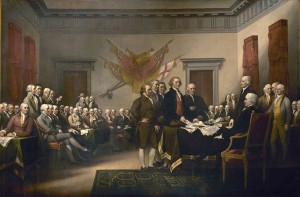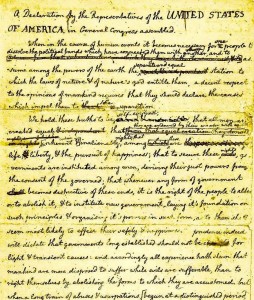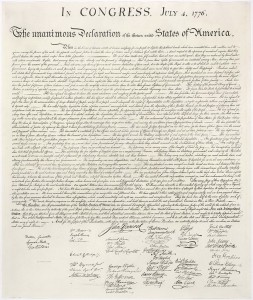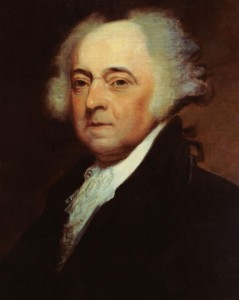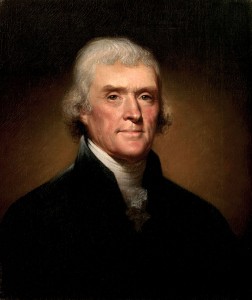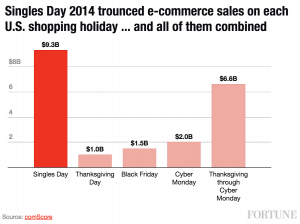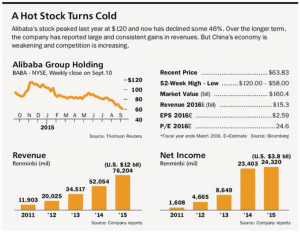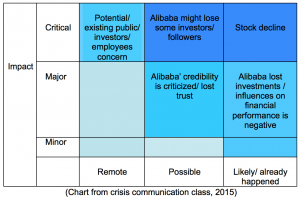Logos Consulting Group president Helio Fred Garcia co-authored an analysis of one of South Korea’s biggest crises of 2016 in Korea’s leading business journal, Dong-A Business Review.

The analysis was co-authored with Dr. Hoh Kim, founder, head coach, and facilitator at THE LAB h in Seoul, Korea.
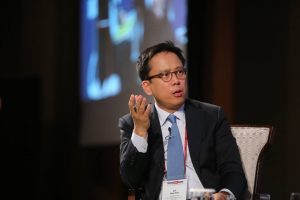
Dr. Hoh Kim, founder, The Lab h, Seoul
Dr. Kim, former head of Edelman’s Korea office, is a certified trainer in the Cialdini Method developed by Dr. Robert Cialdini, and a certified coach in the Marshall Goldsmith Certified Stakeholder Centered Coaching method. Dr. Kim is the primary author of the Dong-A Business Review analysis.
Their article examines the crises surrounding The Lotte Group, one of Korea’s leading industrial conglomerates. Lotte Group consists of more than 60 business units and employs 60,000 people in such industries as hotels, beverages, candy manufacturing, fast food, retail, financial services, chemicals, electronics, IT, construction, publishing, and entertainment.

In October Lotte Group’s Chairman, Shin Dong-bin, was indicted on tax evasion, embezzlement, and other charges. His sister, Shin Young Ja, was arrested several months before for embezzlement and bribery.
Lotte Group is one of Korea’s chaebols, family run business conglomerates, a common form of business organization in Korea.
You can download the complete original Korean language version of the analysis here.
An English translation follows below:
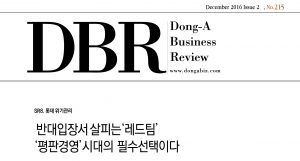
The Crisis Management of Lotte
‘A red team’ that challenges a corporation from within is necessary
in the era of ‘reputation management’
Co-authored by
Hoh Kim, Founder, Head Coach & Lead Facilitator, THE LAB h and
Helio Fred Garcia, President of Logos Consulting Group
Published at Dong-A Business Review (DBR), December 2016 Issue 2 (No. 215), pp. 90-94, in Korea
AUTHORS
- Dr. Hoh Kim graduated from Hankuk university of foreign studies, where he majored in French literature and philosophy. He earned his master’s degree in PR at Marquette university and his Ph.D at Graduate School of Culture Technology, KAIST. He is one of the 19 Cialdini Method Certified Trainers (CMCT) approved and endorsed by Robert Cialdini, the author of Influence: The Psychology of Persuasion. He has previously led the Korea office of Edelman, a global PR firm and written several books including Cool Apology (co-authored), Cool Survival Kits, Reputation Society (co-authored) and Why I Can’t Say No (all in Korean).
- Dr. Helio Fred Garcia is the founder of Logos Consulting Group and has more than 35 years of experience in crisis management, executive coaching and consulting. He is an adjunct professor of management in NYU’s Stern School of Business Executive MBA program, where he teaches crisis management. He is the author of The Power of Communication: Skills to Build Trust, Inspire Loyalty, and Lead Effectively, and is the co-author with John Doorley of Reputation Management: The Key to Successful Public Relations and Corporate Communication, which was translated into Korean and published as Reputation Management Strategy in Korea by Alma Press in 2016.
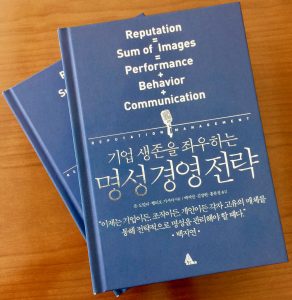
ABSTRACT
According to the book Reputation Management Strategy, the formula for reputation is ‘Reputation = (financial) performance + (organizational) behavior + (corporate) communication’. The Lotte crisis has largely been triggered by problems with its organizational behavior. First, ‘an owner risk’ has occurred in leadership behavior and second, in corporate behavior dealing with its customers and business partners, the company led people to believe that it is not an ethical company. Finally, Lotte has failed in communication because there has been a huge gap between its short-term responses, actual leadership behaviors and its nominal long-term vision.
This article offers suggestions for Korean companies that are facing challenges similar to Lotte’s.
For starters, companies need to get stakeholders to be involved so that they can constantly challenge the companies from the outside. Second, corporations need to have something like ‘a red team’ or ‘a devil’s advocate’ within the organization so that they can bring genuine change to corporate behavior.
ARTICLE
This year the Lotte Group experienced its worst crisis. Here are some questions we need to ask concerning the issue:
- Q1. How did people first respond to the scandal? Did they say “No, Lotte would never do such a thing” Or did they say “I told you so”.
- Q2. How would you respond if someone tells you that you are acting just like Lotte? Would you feel flattered or offended or just regard the comment as neutral?
- Q3. Lotte has made several promises to reform it. Which one impressed you the most? Do you really believe that the company will keep the promises?
We will explain later why these questions matter for Korean businesses in terms of crisis management. In the meantime we want readers to find the answers to the questions on their own.
For the most part, when we analyze a case, we take a careful look at it as if cameras zoom in. And then we figure out what the problem was and how the problem should have been solved. But in the case of Lotte, one of the authors (Dr. Hoh Kim) thought that when it came to solving the problems there was little Lotte could do in the short term. There were three reasons for this.
- First, the core of the crisis lay in conflicts among three members of the founder’s family.
- Second, the founder has failed to smoothly pass down the business to his children, which should have been done over the course of years or decades.
- Third, it is only the founder and his family who could have prevented these problems.
In this article we’d like to talk about Lotte’s crisis management from a reputational perspective.
In the field of crisis management, there is something called issue index. The index refers to a list of potential issues that might occur to a company in the future. When we were reading news articles about the 2016 Lotte crisis, it almost felt like we were seeing the issue index of Korean conglomerates in general. Of course, how dangerous the problems are and how the issues affect the businesses can be different from company to company.
But it is worth looking into the Lotte case because so many Korean conglomerates share the same kinds problems as Lotte. Conflict over succession and slush funds are a good example.
The authors discussed how we could approach the Lotte case and decided to suggest a common tool that can be applied to other Korean chaebols. (Chaebols are large Korean business conglomerates, mostly family led.)
We believe that it would be helpful to develop ‘a mirror’ that other companies or business people could use to reflect themselves, not ‘a mere window’ through which other conglomerates may just watch and do nothing. But a mirror to create self-awareness.
Also, with this analysis we’d like to present the last puzzle piece to Korean chaebols that can help them advance their management of crisis and reputation.
One Element in the Reputation Formula that
Most Korean Conglomerates are Missing:
The book Reputation Management Strategy that Dr. Garcia has co-written with John Doorley introduces a reputation formula as below:
Reputation =
(Financial) Performance + (Organizational) Behavior + (Corporate) Communication
The seriousness of the Lotte crisis lies not just in legal risks that it might face but also in a damage to its reputation.
The crisis facing Lotte at the moment is completely different from a crisis that a conglomerate might encounter when it fails to do well in its operations. The current Lotte crisis is highly likely to directly hurt its reputation. So in this case one of the most important crisis-management goals is to recover reputation.
What lessons can the reputation formula offer to Korean Chaebols as a whole as well as to Lotte?
The three elements in the formula are:
-
- Financial Performance
- Long-Term Performance
- Short-Term Performance
- Organizational Behavior
- Leadership Behavior
- Behavior Towards Others
- Behavior Towards Society
- Corporate Communication
- Tactical and Short-Term Communication v. Strategic & Long-Term Communication
- External Communication v. Internal Communication
Financial performance, as an element that affects reputation, has two factors: long-term performance and short-term performance. Long-term performance can include profits of the last 10 years or long-term growth potential. Profit for the year is an example of short-term performance. In the case of Lotte, financial performance was not the major factor that affected its reputation.
When it comes to organizational behavior, there are three factors:
- The first is leadership behavior.
When the Lotte crisis took place, the behavior of the founder’s family was broadcast almost in real time and not just Lotte employees but also the public were able to learn about it. The conflict among the family members exposed various problems within the chaebol including opaque business practices and governance structure, and succession-related problems. And all these conflicts still remain unresolved. What is unique about founder’s family-related problems is the fact that both the crisis maker and the crisis manager are the founder and his family dynasty. This is a serious problem because it is almost impossible for the employees to take actions to solve the problem. All they can do is simply following orders from the founder’s family.
- The second factor of organizational behavior is about consumers and business partners.
This includes how satisfied consumers are with the products and services provided by Lotte and what its partners (vendors) think of working with Lotte.
- The third factor is about corporate behavior towards society.
So-called ‘Corporate Social Responsibility’ is a good example of this. In October, Lotte’s Chairman, Shin Dong-bin, made a public apology and announced reform plans. In the plans, he adjusted the original growth target of increasing its sales to 200 trillion Won (Korean currency) by 2020 and of becoming Asia’s tenth largest company. He then shifted his focus to corporate social responsibility, particularly philanthropy, and said he would put more emphasis on meeting people’s expectation and promoting social values. He stopped short of detailing his plans for fulfilling corporate social responsibility.
In fact, what really matters when it comes to corporations’ social behavior is not philanthropic activities but how companies make profit.
As a matter of fact, in ISO 26000, an International Standard providing guidelines for social responsibility, the word ‘philanthropy’ is mentioned only once. According to the standard, how responsible a company is depends on how much the company contributes to things like human rights, labor practices, the environment, fair business practices, consumer issues and local communities. ISO asserts that corporate social responsibility is about how to make a profit, not about what to do with profit. In other words, to become socially responsible, a company needs to make profit in positive ways. Whether it engages in charitable activities or not is a minor issue. Korean chaebols need to do more in this regard.
Corporate communication, the last factor of the reputation formula, includes both tactical and short-term communication activities like press release and press conference, and strategic and long-term communication activities such as creating corporate missions, visions and values.
Another form of corporate communication includes communication with consumers and the public and communication with employees. If you go to Lotte’s website(lotte.co.kr), you can find its management policies. The first policy is about transparency and it reads: “we shall promote transparency in our operation and financial performance by tightening self-monitoring systems and strengthening regulatory tools”.
The company also says that it shall put the idea into practice by establishing a system that helps its shareholders understand how the company is doing, by honestly sharing management-related information and decision making and by actively supporting the board of directors and creating a committee that promotes transparent business practices.
One of the core values of the company is responsibility and it reads: “we shall always honestly run the business and contribute to social development by fulfilling our social responsibility. And its action guidelines read: we shall not cover up our mistakes and immediately inform our mistakes and correct them; we shall execute our tasks according to legal, ethical and social standards.”
Lotte is being criticized because there are gaps between its corporate communication and organizational behavior, particularly its leadership behavior. This Say-Do Gap is the key problem.
One could conclude that Lott’s statements of corporate vision, values and action guidelines are just meant to be framed and hung on the wall. One might also add that in reality no company takes these things seriously.
But stated values create expectations. And trust rises when expectations are met; falls when expectations are not met.

If corporate founders ignore the management policies and detailed action plans that they themselves have created, they will face a situation where it is almost impossible to exercise their leadership because they will lose the trust of those who matter to them.
This is the last piece in the reputation puzzle that Korean conglomerates need to improve. Korean chaebols have been able to show world-class business performance through innovation in their products and services. They also have heavily invested in advertising and promotion and have seen great improvement in their corporate communication.
However, they are rightly criticized for failing to make a meaningful change in their corporate behavior, particularly in their leadership and social behavior. The founders and chief executives of chaebols create ‘great’ visions and values for their companies, but top management themselves often do not take these visions and values seriously. In today’s world, where it is easy to monitor corporate behavior and where stakeholders have easy access to information, organizational and leadership behaviors that haven’t been detected before now can greatly influence corporate reputation.
As we analyzed the Lotte case, we defined the gap among performance, behavior and communication as the fundamental cause for loss of Lotte’s reputation.
Korean chaebols as a whole often have gaps in their business, not just the gap between behavior and communication, but also between performance and communication and between performance and behavior.
So far, when Korean chaebols have faced a crisis as a result of their mistakes and wrongdoings made public, they have done all the same as if there is a formula for such situation: to issue an apology, hold a press conference, take a bow and make some promises. But, few companies have kept their promises and now few consumers and citizens believe them.
One of the most important jobs of the public relations departments of large companies in Korea has been to stop scandals involving their founder’s family dynasty from spreading. This year Koreans saw massive protests against the government that have been symbolized as candles. In this circumstance one might wonder if Korean conglomerates will be able to continue to make profit (performance) and manage crises and their reputation in the way they have been doing for a long time. Will that be possible without changing their behavior?
The Last Piece of Puzzle:
Will They Change Their Behavior?
The important question that conglomerates, founder’s families, and executives need to ask themselves is whether they are going to change their behavior.
The challenge that Lotte chairman Shin Dong-bin faces now is not to overcome this crisis but whether he changes the corporation’s behavior. If he doesn’t, the company might face another similar or worse crisis in the future.
What can businesses do to change their behavior? We get some ideas from a behavior-change model in the leadership field, not from the crisis-management field.
Dr. Marshall Goldsmith, the world’s leading leadership coach, says that stakeholder engagement is the most important factor in changing corporate behavior. So, for example, if one is to quit smoking, he needs to let his colleagues know about his decision. When around him are engaged they can watch to determine whether he changes his behavior. As a result, he is more likely to become determined to change. This is part of why many people sign up and go to the gym, or team up with others to exercise. They aim to change their behavior by engaging stakeholders.
In October, Lotte chairman Shin announced reform plans and said that he will establish a watchdog committee that will be directly monitored by him and hire experts from outside. Will this committee be able to lead the conglomerate to change?
To succeed, the committee must be able to act like a red team.
A red team refers to a structure similar to a devil’s advocate — someone who is actually a member of the organization but monitors and points out problems from the opposite point of view in the interest of that organization.
If Lotte has such a committee just for appearance’s sake, the effort is highly likely to fail.
In the beginning of this article, we asked three questions. Now we’d like to explain why such questions matter and what our answers are.
In order for companies to change their behavior, nothing is more important than to figure out exactly how their stakeholders think of them. In fact, many Koreans have negative perspectives of Korean conglomerates.
If the founders of big corporations or chief executives are to properly manage crises and reputation, they need to understand how those who matter to them view them. When a disaster takes place or when the end of the year is near, chaebols often donate hundreds of millions or even billions of Won (Korean currency) to those in need. They even encourage their employees to perform community services. So big companies often complain that they are unfairly criticized because they actually do many things for communities.
Here’s a question: If chaebols raise their donations by two to three times or perform more community service, will their stakeholders have a better view of them?
We don’t think so, because people’s fundamental ideas of chaebols are negative. Many take conglomerates’ donations and community service for granted because they believe that chaebols must give some money for the poor at the end of the year because they have done so many bad things all the year round.
What kinds of strategies should conglomerates adopt to effectively manage their reputation and crises? And how should they put the strategies into practice?
In most cases, there are two types of behaviors that chaebols engage in facing a crisis. First, they engage in behaviors that make their negative image worse. Such behaviors include cover-up, lie, evasion of responsibility, denial and even blaming victims — just as recently happened when a daughter of Korean Air Line’s chairman threw a fit, angrily insisting that a plane she was on return to the gate of an airport. These kinds of behaviors reinforce consumers’ negative views of chaebols.
The other type of behavior is the ones that contrast sharply with people’s negative perspectives. For instance, the public found it surprising when a daughter, not a son, of the founder’s family of a big company had joined the navy as a naval officer. The public knew that the decision was not made to improve the image of the company but still found it pleasantly surprising.
Also, when Korea was hit by the Middle East Respiratory Syndrome pandemic (MERS), Samsung’s Vice Chairman JY Lee conceded his company’s fault and sincerely apologized to the public. This gave the public an opportunity to fix their negative perceptions towards chaebols because most people thought that chaebol owners would deny their responsibility when a crisis takes place.
Of course, if Korean conglomerates are to overcome crises and transform their image, they need to do more than just create a temporary surprising event. Corporate founder’s family must be determined and engage in consistent “surprising behaviors.”
Protesters holding candles are calling for change not just within the government. They are sending a strong signal that there must be a paradigm shift in chaebols’ management of crisis and reputation.
The public is calling for change in corporate behavior. We each have public relations experience and have long worked in crisis management and strategy communication consulting. The conclusion that we want to share with readers is clear: If one approaches crisis and reputation management from the perspective merely of public relations, one is bound to fail.
Food for Thought
-
-
- What kinds of images do publics have about my company? Apart from the products and services that my company provides, how do publics think of my company? Do they think of it as the one that coexists with, is mutually beneficial with and contributes to society? Or as evil? If the latter, why is that? What are your solutions to fix the image?
-
-
- It is difficult to improve corporate reputation merely by engaging in some corporate social responsibility efforts and philanthropy or by handing out some corporate leaflets. To get positive reputation, the entire company needs to make an effort to create social value, and this approach should be the center of profit-making process. The reason why this approach matters is the reason why the CSV (creating shared value) strategy matters. Does my company take CSV seriously? Does it have a team that puts the idea into practice?
# # #
Note:
Reputation Management: The Key to Successful Public Relations and Corporate Communication, by John Doorley and Helio Fred Garcia, was originally published in 2007. It is now in its Third Edition in English. A Korean translation was published as Reputation Management Strategy in 2016. A Chinese edition is scheduled to be published in early 2017. A French language edition is now underway, due to be published in late 2017.
John Doorley is a Visiting Associate Professor at Elon University in Elon, North Carolina, and a Director in Mindful Reputation. He is a founding academic director of New York University’s MS in Public Relations and Corporate Communication.
Dr. Hoh Kim and Helio Fred Garcia began working together in September, 2015 when Dr. Kim was the moderator and Mr. Garcia was a keynote speaker in the Chosun Issue Forum, a conference on crisis management in Korea sponsored by Chosunilbo, Korea’s leading newspaper.
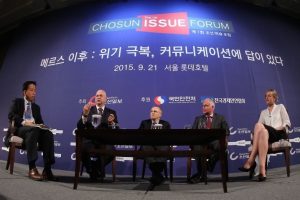
Dr. Hoh Kim, left, moderating a panel discussion at Chosun Issue Forum, Seoul, September, 2015


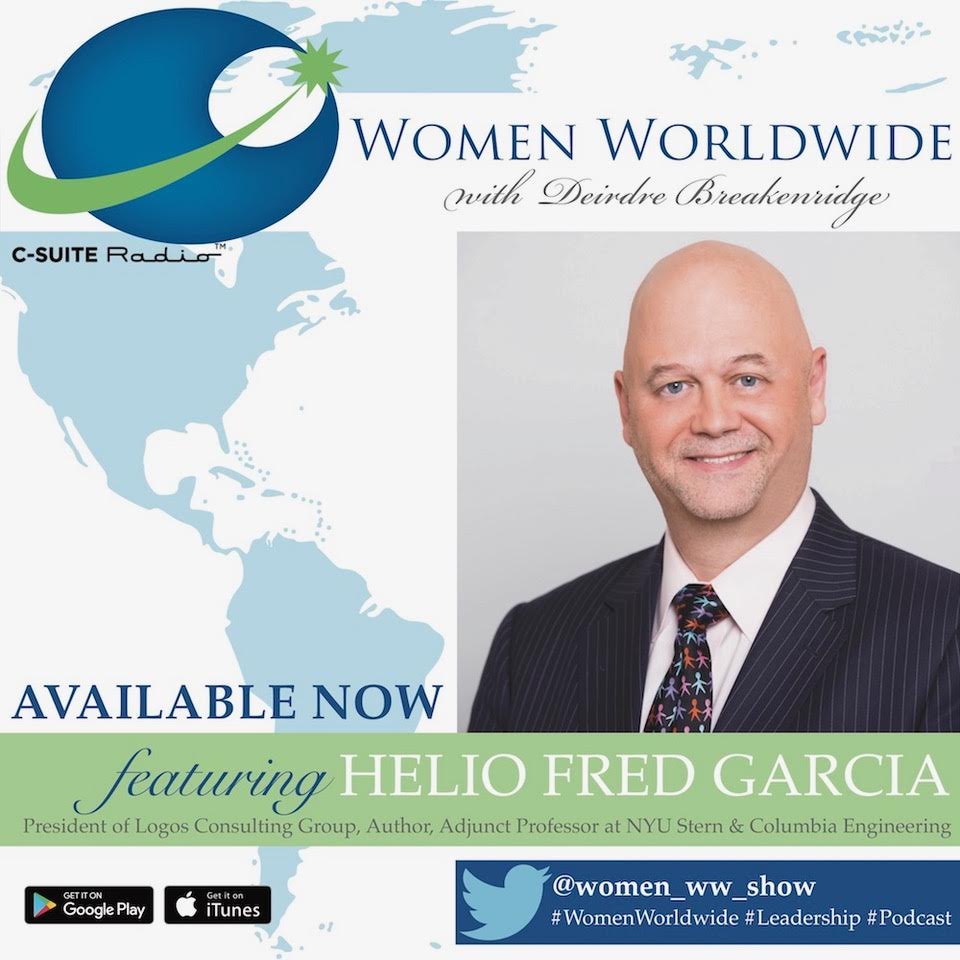




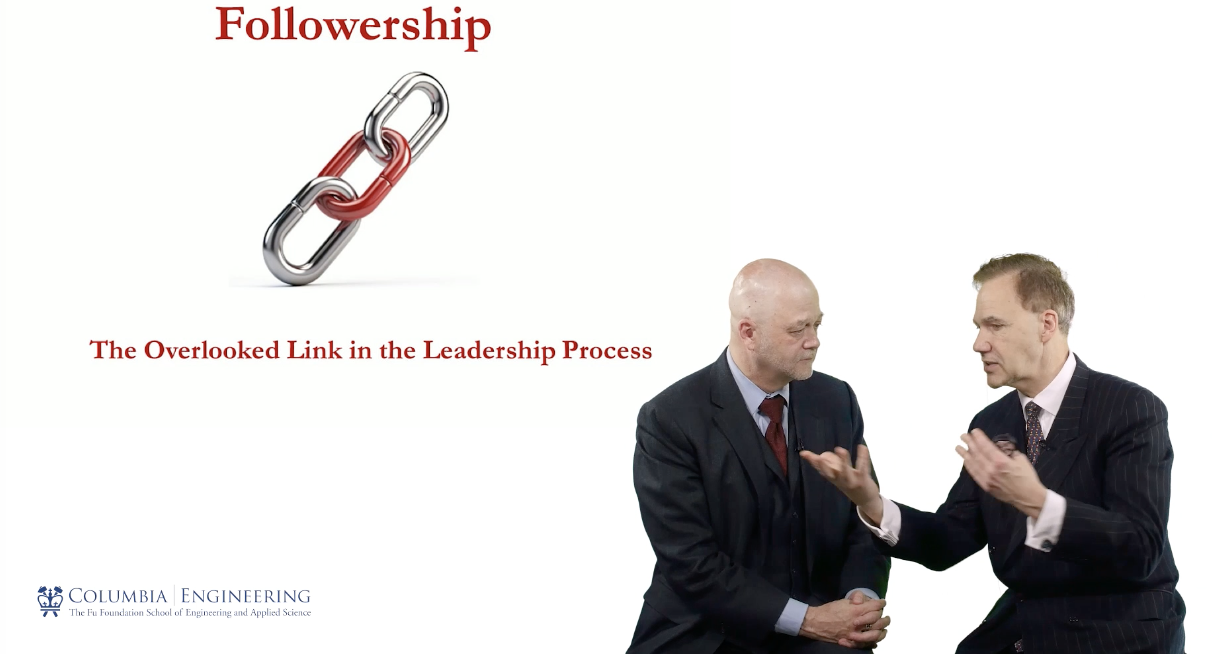

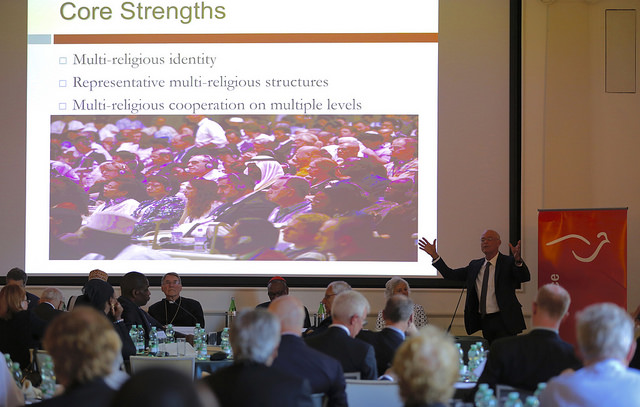
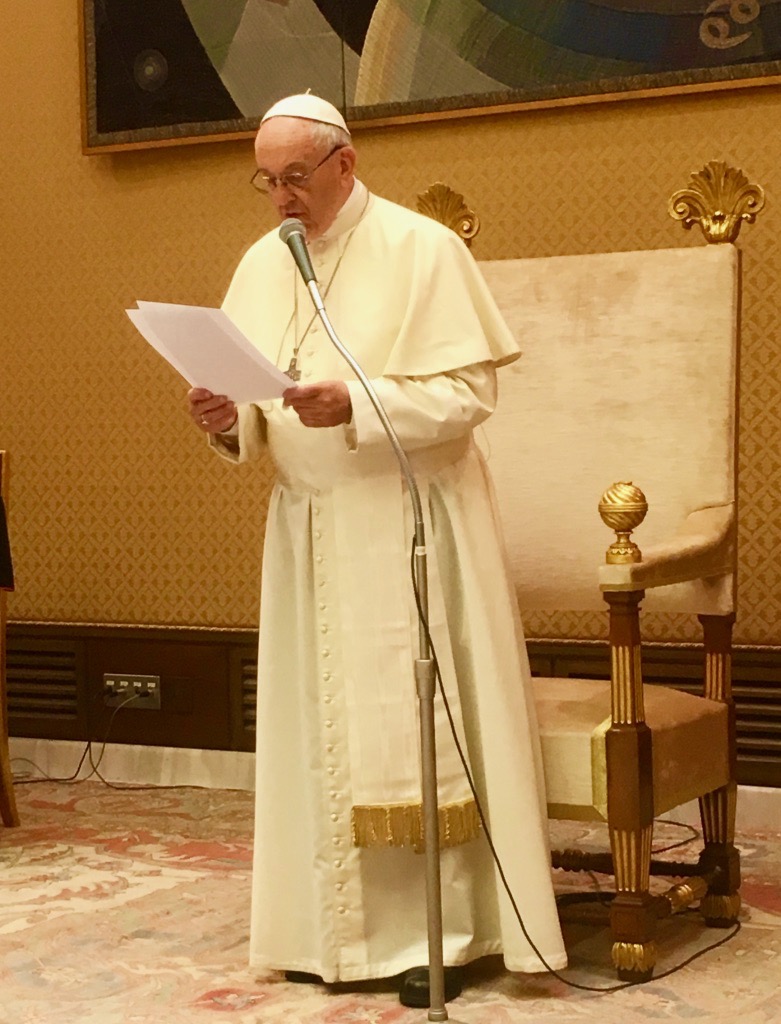
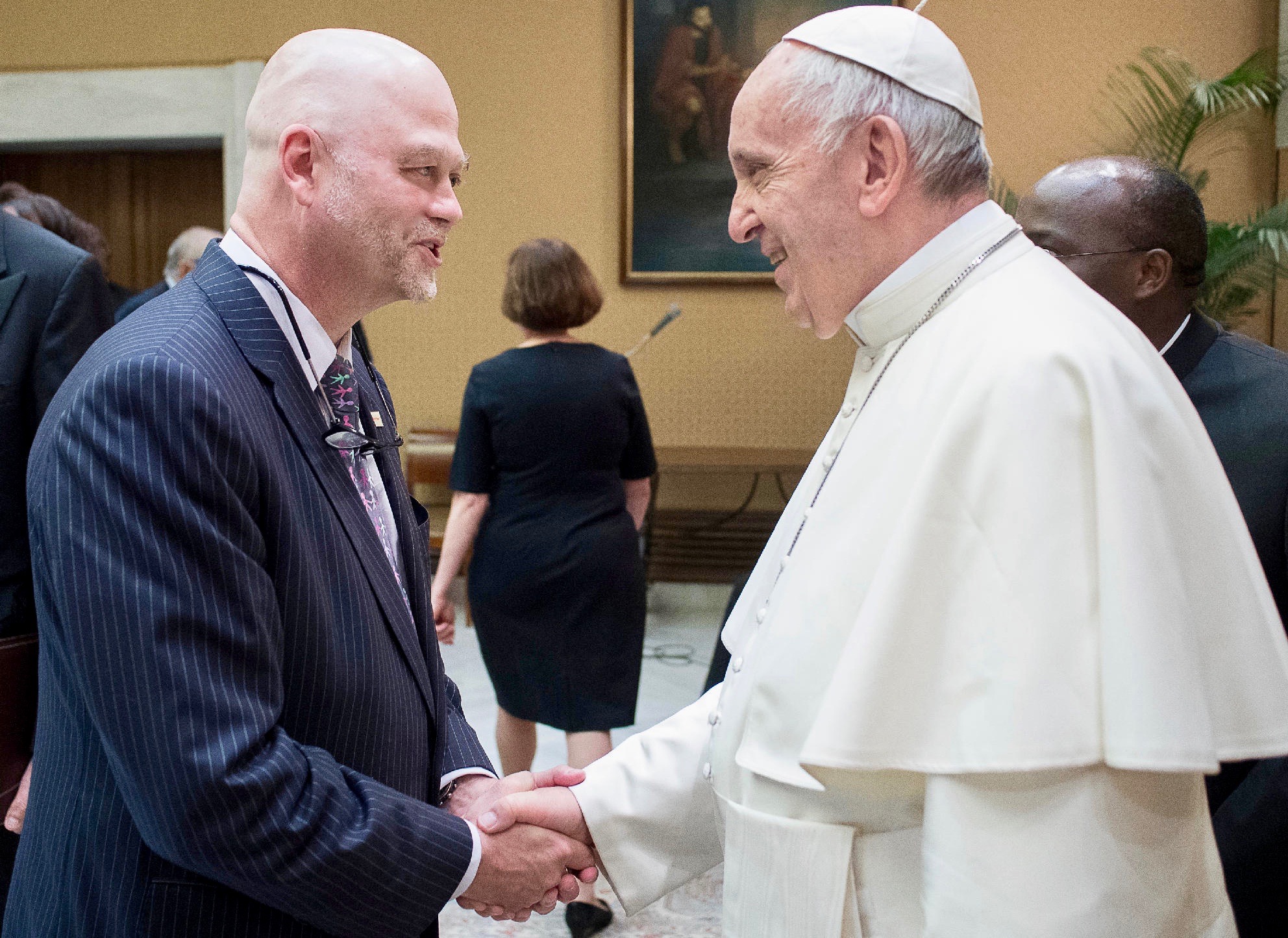
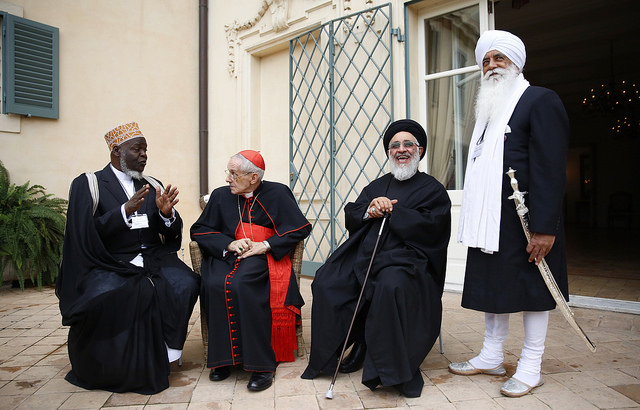
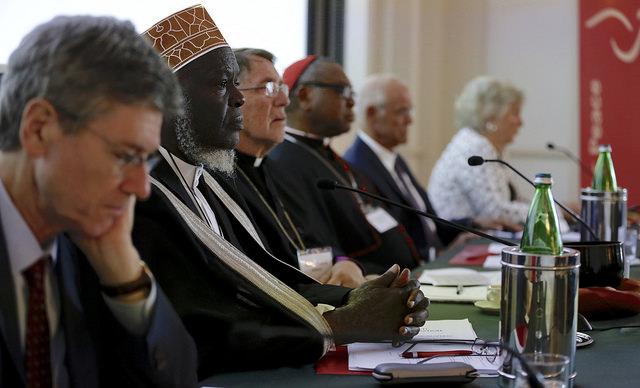
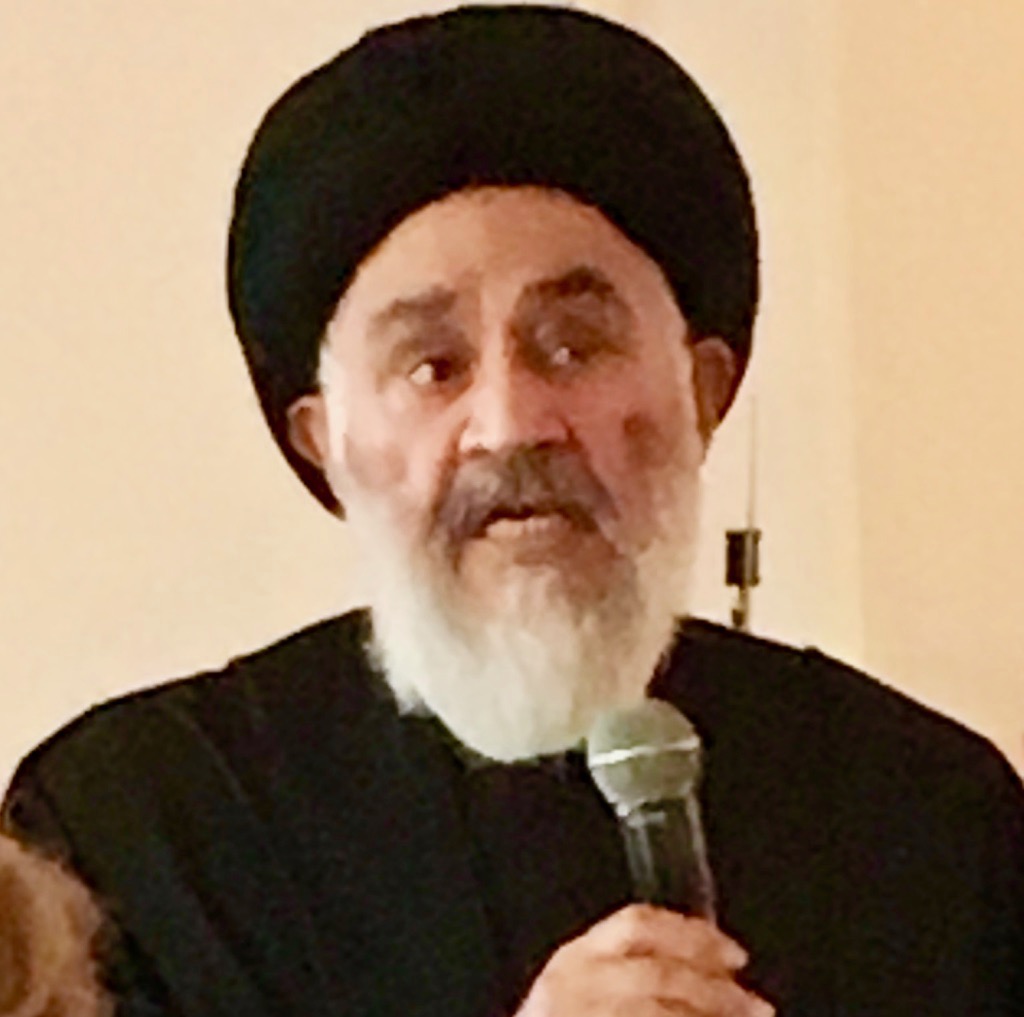

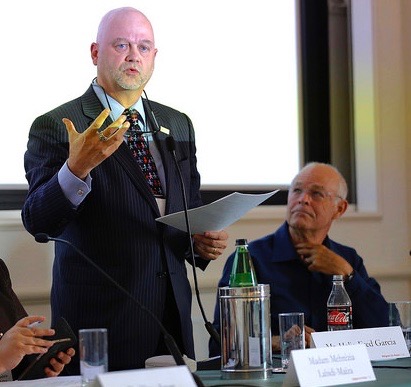



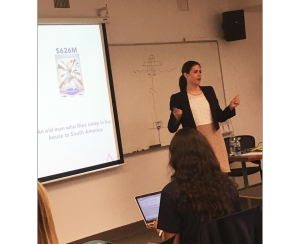


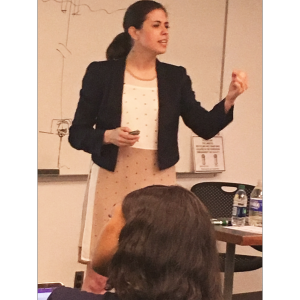


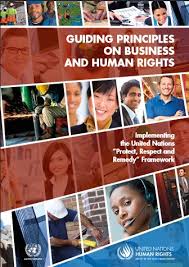 “
“
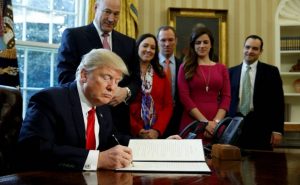 The business and human rights landscape in the United States shifted dramatically with the election of Donald Trump.
The business and human rights landscape in the United States shifted dramatically with the election of Donald Trump.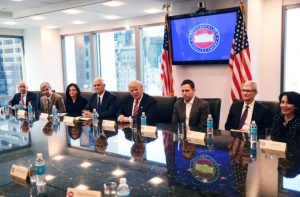
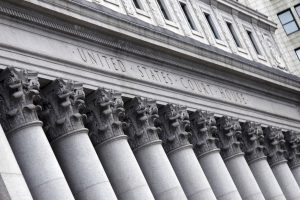 Internationally recognized human rights threatened by proposed actions of the Trump administration
Internationally recognized human rights threatened by proposed actions of the Trump administration 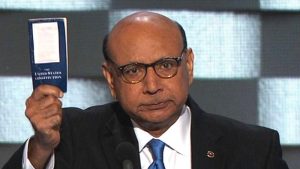 Companies operating in the United States should consider the U.S. Constitution together with the international human rights instruments to define their potential human rights impacts. Most internationally recognized human rights are protected in some form under United States law at the federal, state and/or local level. The United States Constitution’s Bill of Rights, for example, enumerates rights including the free exercise of religion (First Amendment): the freedoms of speech, of the press, and of assembly (First Amendment); freedom from unreasonable searches and seizures (Fourth Amendment); the right to vote (Fifteenth, Nineteenth, Twenty-Fourth, Twenty-Sixth Amendments); and the rights to citizenship, due process and equal protection of the law (Fourteenth Amendment).
Companies operating in the United States should consider the U.S. Constitution together with the international human rights instruments to define their potential human rights impacts. Most internationally recognized human rights are protected in some form under United States law at the federal, state and/or local level. The United States Constitution’s Bill of Rights, for example, enumerates rights including the free exercise of religion (First Amendment): the freedoms of speech, of the press, and of assembly (First Amendment); freedom from unreasonable searches and seizures (Fourth Amendment); the right to vote (Fifteenth, Nineteenth, Twenty-Fourth, Twenty-Sixth Amendments); and the rights to citizenship, due process and equal protection of the law (Fourteenth Amendment). Companies can manage the risks of contributing or being connected to government actions that violate human and Constitutional rights using the same concepts and tools that apply a human rights lens to their non-U.S. operations. In the Trump era, companies must exercise due diligence to identify, prevent and mitigate the domestic human rights impacts of their operations and business relationships in the United States.
Companies can manage the risks of contributing or being connected to government actions that violate human and Constitutional rights using the same concepts and tools that apply a human rights lens to their non-U.S. operations. In the Trump era, companies must exercise due diligence to identify, prevent and mitigate the domestic human rights impacts of their operations and business relationships in the United States.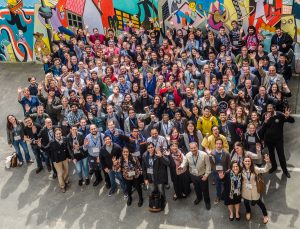 When government actions threaten or harm employees, companies must act to support and protect them. The priority for companies in the wake of the immigration ban has been to identify affected employees, ensure their safety, and provide assistance, such as travel, legal and financial support. Providing employees with clear, accurate information about the immigration ban and its impact, so that individuals can take action to protect themselves and their families, is a first step companies can take to meet their responsibility to employees. Employees are the stakeholder group companies can help most directly, but businesses must also consider how to support and protect others connected to their particular business, such as customers, business partners and the communities where they operate.
When government actions threaten or harm employees, companies must act to support and protect them. The priority for companies in the wake of the immigration ban has been to identify affected employees, ensure their safety, and provide assistance, such as travel, legal and financial support. Providing employees with clear, accurate information about the immigration ban and its impact, so that individuals can take action to protect themselves and their families, is a first step companies can take to meet their responsibility to employees. Employees are the stakeholder group companies can help most directly, but businesses must also consider how to support and protect others connected to their particular business, such as customers, business partners and the communities where they operate.
 When companies are unable to stop harmful policies and actions by others, they can seek to mitigate the negative impact on their employees, customers, business partners and communities. Companies have sought to comply with the spirit of international human rights standards outside the United States by protecting rights “within the factory walls.” Brands sourcing from factories in China, for example, where independent trade unions are banned, have promoted the creation of factory worker councils to bring concerns over working conditions to management. Businesses must consider ways to ensure that their U.S. workplaces provide safe spaces where individual rights are protected. Adopting workplace policies reinforcing a commitment to non-discrimination and prohibiting the harassment of any individual based on national origin or immigration status is one concrete way to meet the corporate responsibility to respect rights.
When companies are unable to stop harmful policies and actions by others, they can seek to mitigate the negative impact on their employees, customers, business partners and communities. Companies have sought to comply with the spirit of international human rights standards outside the United States by protecting rights “within the factory walls.” Brands sourcing from factories in China, for example, where independent trade unions are banned, have promoted the creation of factory worker councils to bring concerns over working conditions to management. Businesses must consider ways to ensure that their U.S. workplaces provide safe spaces where individual rights are protected. Adopting workplace policies reinforcing a commitment to non-discrimination and prohibiting the harassment of any individual based on national origin or immigration status is one concrete way to meet the corporate responsibility to respect rights.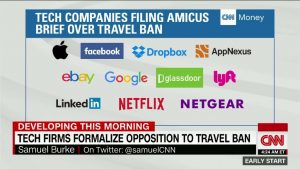 In countries where laws explicitly contradict international human rights standards, companies have found ways to minimize their connection to human rights violations by others. In China, Brazil and elsewhere, for example, foreign technology firms have insisted upon valid judicial orders before acquiescing to demands from government officials to turn over personally identifiable user information for questionable purposes. Companies may face similar situations in the United States if asked by law enforcement authorities to turn over personal information related to their employees’ or customers’ national origin, immigration status or religious beliefs. Businesses can exhaust all available legal processes, as Apple successfully refused to collaborate with the FBI to unlock encrypted iPhones, and challenge the legality of government actions in court, as some companies are now doing in opposition to the immigration ban. Companies can also communicate publicly about government actions that violate rights, using transparency to highlight actual and potential rights violations. Since 2009, for example, Google has published a “
In countries where laws explicitly contradict international human rights standards, companies have found ways to minimize their connection to human rights violations by others. In China, Brazil and elsewhere, for example, foreign technology firms have insisted upon valid judicial orders before acquiescing to demands from government officials to turn over personally identifiable user information for questionable purposes. Companies may face similar situations in the United States if asked by law enforcement authorities to turn over personal information related to their employees’ or customers’ national origin, immigration status or religious beliefs. Businesses can exhaust all available legal processes, as Apple successfully refused to collaborate with the FBI to unlock encrypted iPhones, and challenge the legality of government actions in court, as some companies are now doing in opposition to the immigration ban. Companies can also communicate publicly about government actions that violate rights, using transparency to highlight actual and potential rights violations. Since 2009, for example, Google has published a “ Companies in diverse sectors are speaking out against the immigration ban. In response to government actions targeting Muslims, immigrants and refugees, companies are directing corporate resources toward organizations defending these groups and their rights. Multinational companies have learned that the corporate responsibility to respect human rights often requires advocating for governments to fulfill their own human rights obligations. Companies have criticized rights violations by governments around the world and opposed harmful government policies privately, publicly and in partnership with others through business associations, coalitions and advocacy networks. More businesses will need to become public rights advocates in the United States.
Companies in diverse sectors are speaking out against the immigration ban. In response to government actions targeting Muslims, immigrants and refugees, companies are directing corporate resources toward organizations defending these groups and their rights. Multinational companies have learned that the corporate responsibility to respect human rights often requires advocating for governments to fulfill their own human rights obligations. Companies have criticized rights violations by governments around the world and opposed harmful government policies privately, publicly and in partnership with others through business associations, coalitions and advocacy networks. More businesses will need to become public rights advocates in the United States.  Corporate advocacy is most effective when it reinforces company values. U.S. companies in recent years have publicly opposed state laws in the United States that would permit discrimination based on sexual preference. Since the election, U.S. companies have
Corporate advocacy is most effective when it reinforces company values. U.S. companies in recent years have publicly opposed state laws in the United States that would permit discrimination based on sexual preference. Since the election, U.S. companies have 








 Brand loyalty is more likely to help a brand under conditions in the left column (green), and more likely to harm one under conditions in the right column (red).
Brand loyalty is more likely to help a brand under conditions in the left column (green), and more likely to harm one under conditions in the right column (red).





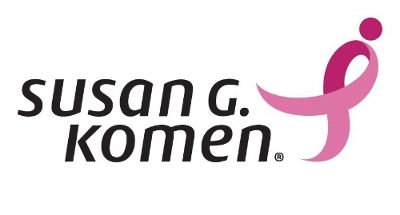 On January 31, 2012, the Susan G Komen Foundation announced its decision to stop funding Planned Parenthood.
On January 31, 2012, the Susan G Komen Foundation announced its decision to stop funding Planned Parenthood.


